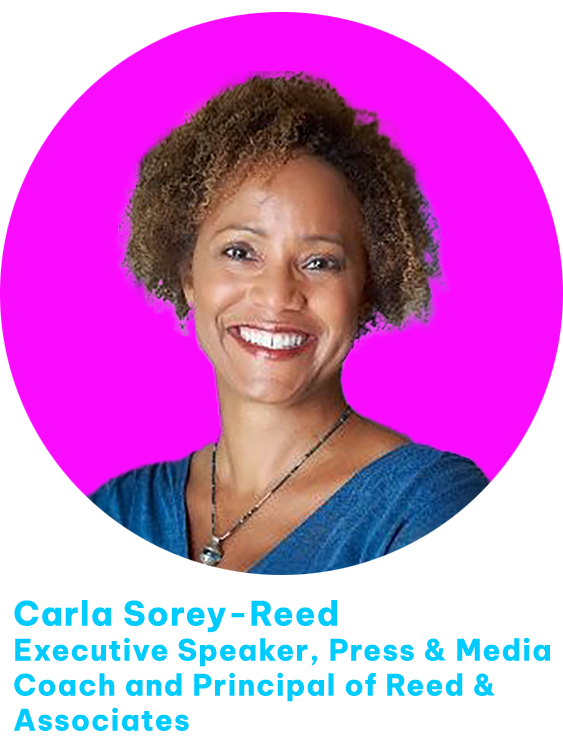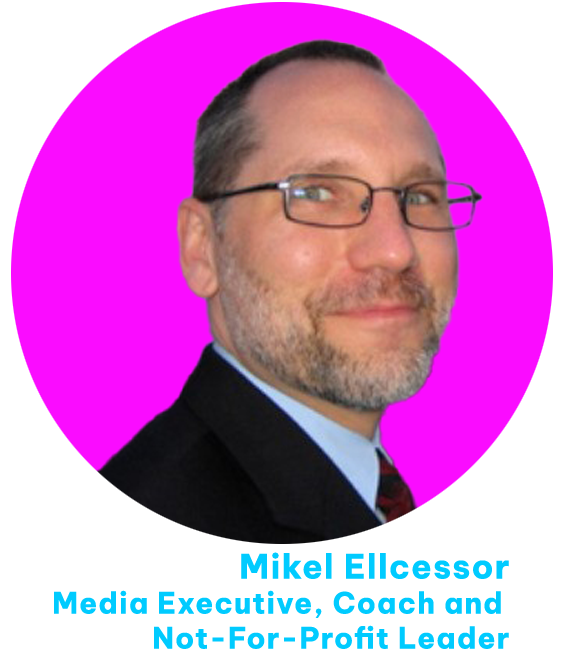With public radio facing unprecedented attacks on its existence, including threats from the FCC to review licenses of stations that continue with DEI policies or content, message discipline has quickly become more than a buzzword. Your station’s license, and even your job, could depend on it.
As part of Paragon’s continuing series of “What Now Conversations,” last week, Paragon held a webinar that included a press and media coach, Carla Sorey-Reed, to provide guidance on message discipline and delivery—whether speaking to listeners, potential donors, or the media. The session delivered practical guidance for refining language, connecting with audiences, and inspiring action. Sorey-Reed, principal of Reed & Associates in Chicago, was joined by coach and not-for-profit leader Mikel Ellcessor and Team Paragon fundraising consultant Christina Shockley. For those who missed it and would like to watch the 60-minute webinar in its entirety or share with staff to get everyone on the same messaging page, the video is here.
Clarity, Relevance, and Resonance
The session kicked off with a deep dive into message discipline, with a strong emphasis on the listener’s needs. Mikel outlined four distinct objectives for a communications strategy: education, persuasion, identification, and activation. These aren’t just goals—they’re the filter through which every statement should pass.
To meet these goals, messages must be:
- Clear: Use short, declarative sentences.
- Relevant: Speak to the specific concerns and interests of the audience.
- Resonant: Emotionally connect through tone, language, and content.
Jargon was flagged as a common pitfall. He advised testing messages with people outside the industry to ensure true clarity. And perhaps most significantly, understanding the importance of honesty, humility, and self-reflection as tools to grow as a public communicator.
From Message Design to Delivery
Effective delivery is just as crucial as well-crafted content. Practicing with coaches, refining language for spoken delivery, and understanding the need and value of time-sensitive calls to action were recurring themes. Public radio professionals were encouraged to prepare messages that inspire—not just inform.
After the webinar, Mikel produced an outline that summarize his section—linked here.
First Step: What Are Your Three Core Messages?
 Carla began by urging stations to create three “core messages” for all staff to memorize and use for all interactions (not just press interviews). For me, this was the biggest “aha moment” because it serves all station and staff communications, not just press interviews. How you respond at the grocery store or a party is just as critical to maintaining message discipline. As Mikel pointed out, most people have more pressing financial and existential survival needs than whether their local public radio station loses funding. Why should they care? The three core messages answer that question. It’s uber important to nail the landing, especially on core message #1.
Carla began by urging stations to create three “core messages” for all staff to memorize and use for all interactions (not just press interviews). For me, this was the biggest “aha moment” because it serves all station and staff communications, not just press interviews. How you respond at the grocery store or a party is just as critical to maintaining message discipline. As Mikel pointed out, most people have more pressing financial and existential survival needs than whether their local public radio station loses funding. Why should they care? The three core messages answer that question. It’s uber important to nail the landing, especially on core message #1.
We intentionally did not address the actual station messaging on the webinar because it varies by station and license-holder. Educational licenses (licensed to public or private education institutions that received government funding) may have greater restrictions and guidance from their license-holder. Once the three core messages are established, write them down, distribute, and memorize!
Owning the Press Interview: The “Three-Point First Response”
Carla brought focused energy to the topic of interview preparation.
Her advice: Don’t just prep for the expected questions—prep for the tough or sensitive question that you hope they don’t ask.
She introduced the “three-point first response” strategy that should be committed to memory, practiced, and used to answer any and every first question:
- Greet the interviewer warmly by name.
- Bridge or Pivot to your first “core message.”
- Deliver your most important key message—a concise, compelling point.
This framework helps speakers take control of interviews from the start, setting a positive tone and guiding the conversation with purpose.
Fundraising with Focus: Christina’s Bold Messaging
When it came to fundraising, Christina made one thing clear: every single statement must be a reason to give. She challenged attendees to look at their messaging critically: if the listener only heard that one sentence, would they be pushed toward giving?
When it comes to message discipline for fundraising, she recommended:
- Reduce the number of messages to avoid dilution.
- Target specific donor types in drives—like new members or monthly sustainers.
- Write scripts in a more conversational and casual way than you think you need to and include only one thought per sentence.
Christina encouraged creativity and boldness, advocating for campaigns that stand out and deeply connect with the listener’s values. She acknowledged this will mean risk-taking, but she empowered attendees to jump fully into new techniques. She noted that stations must try new methods, especially now as funding sources become more unreliable, and that the time is now to “shake off” old fund drive formulas.
When Christina works with public radio stations, she applies programming guidelines to fundraising. That means avoiding offramps, using every sentence to convince the listener to keep listening, and to speak authentically and honestly to connect with the audience.
She also highlighted one of the biggest fundraising traps – talking about ourselves. Christina believes we must always keep the focus on the listener, and suggested ways to turn “I” statements around into “you” statements.
Action, Optimism, and Urgency
The Q&A wrapped the session with practical insights from attendees and speakers. From tactics to reactivate recent donors that have already given, to ending fundraising pitches with “bullish optimism,” the emphasis was on finishing strong.
I left participants with a clear challenge: find your next gear and dig in. With public radio at a pivotal moment, there’s no time to coast.
Public Radio’s Voice
Public radio’s power lies in its voice. With clarity, courage, and strategic messaging, you can ensure that voice continues to educate, inspire, and thrive.
More about Mike Henry.



Leave A Comment